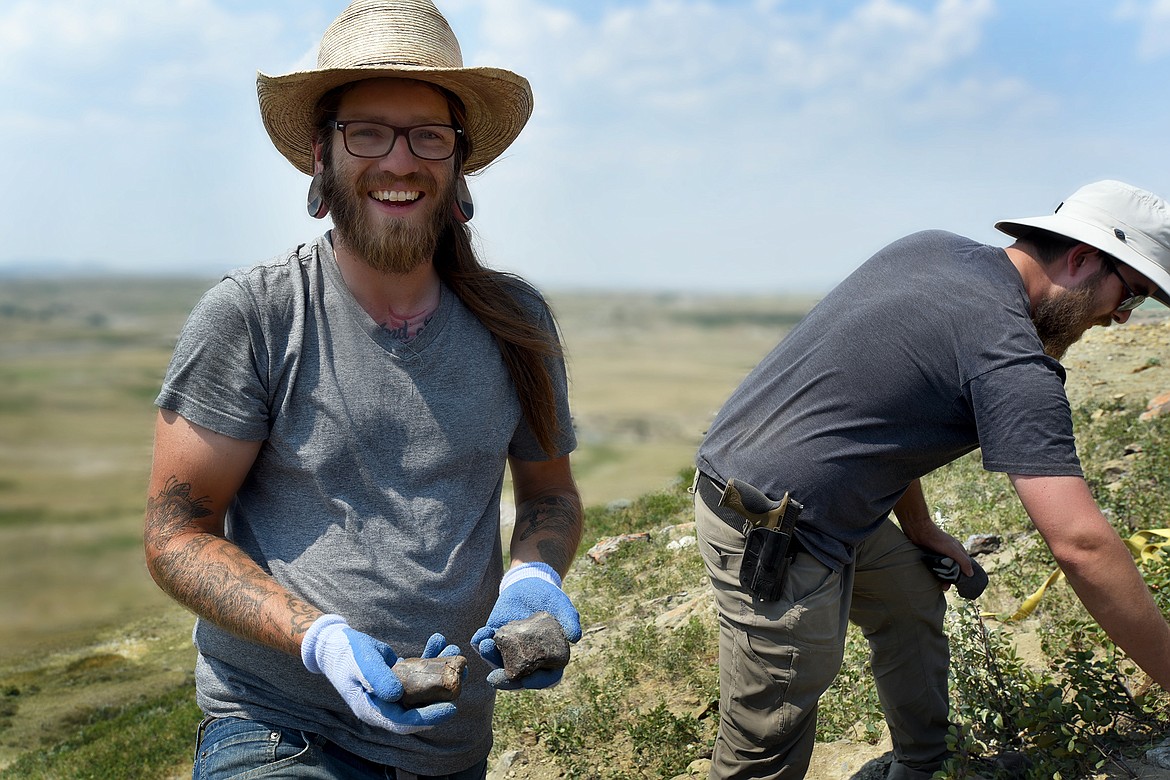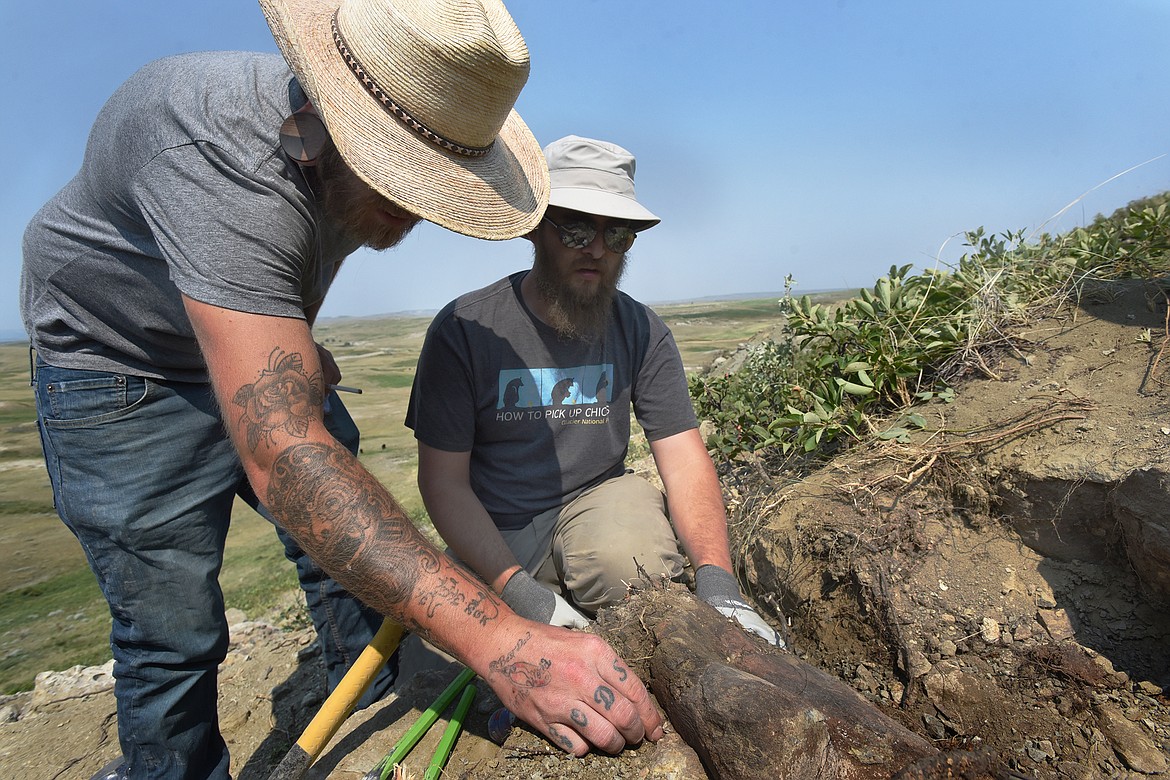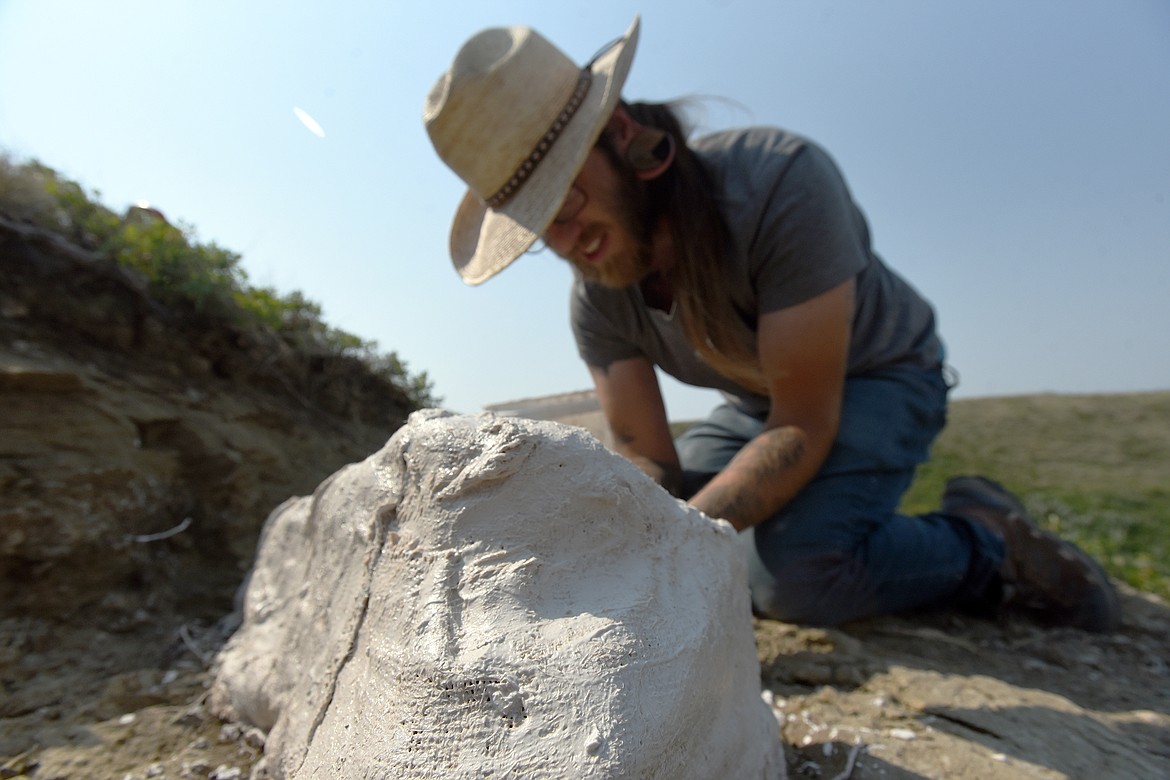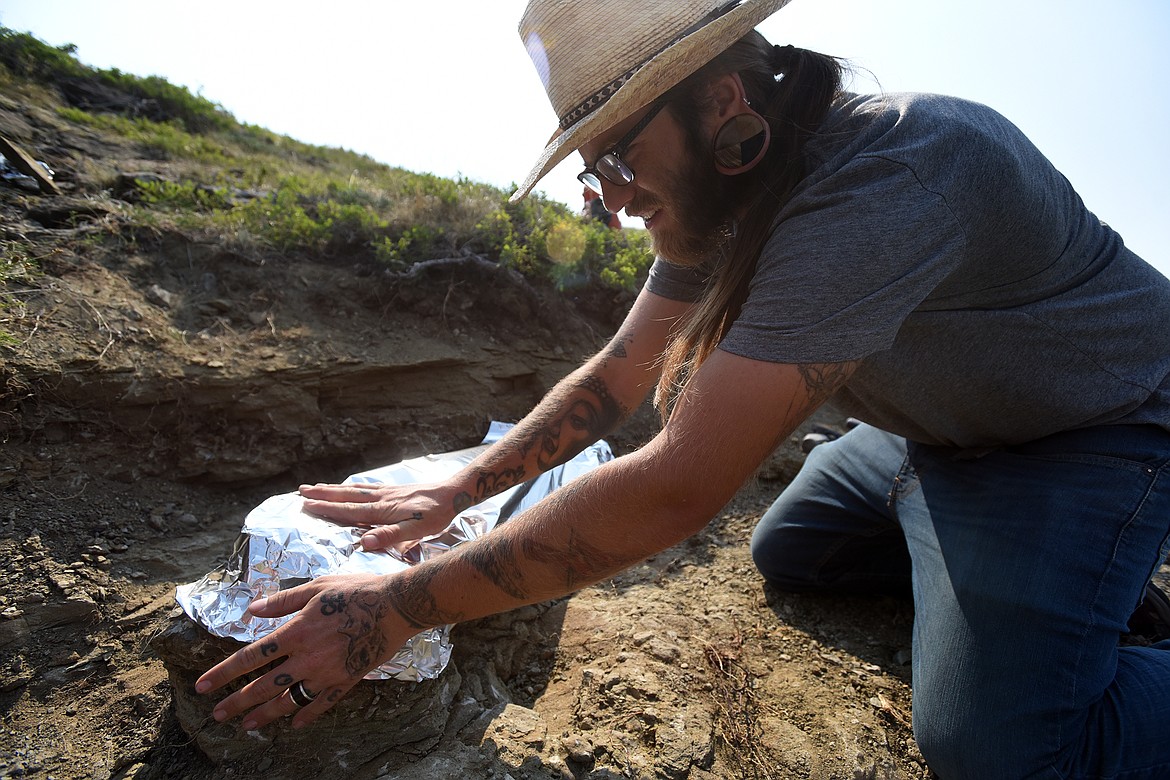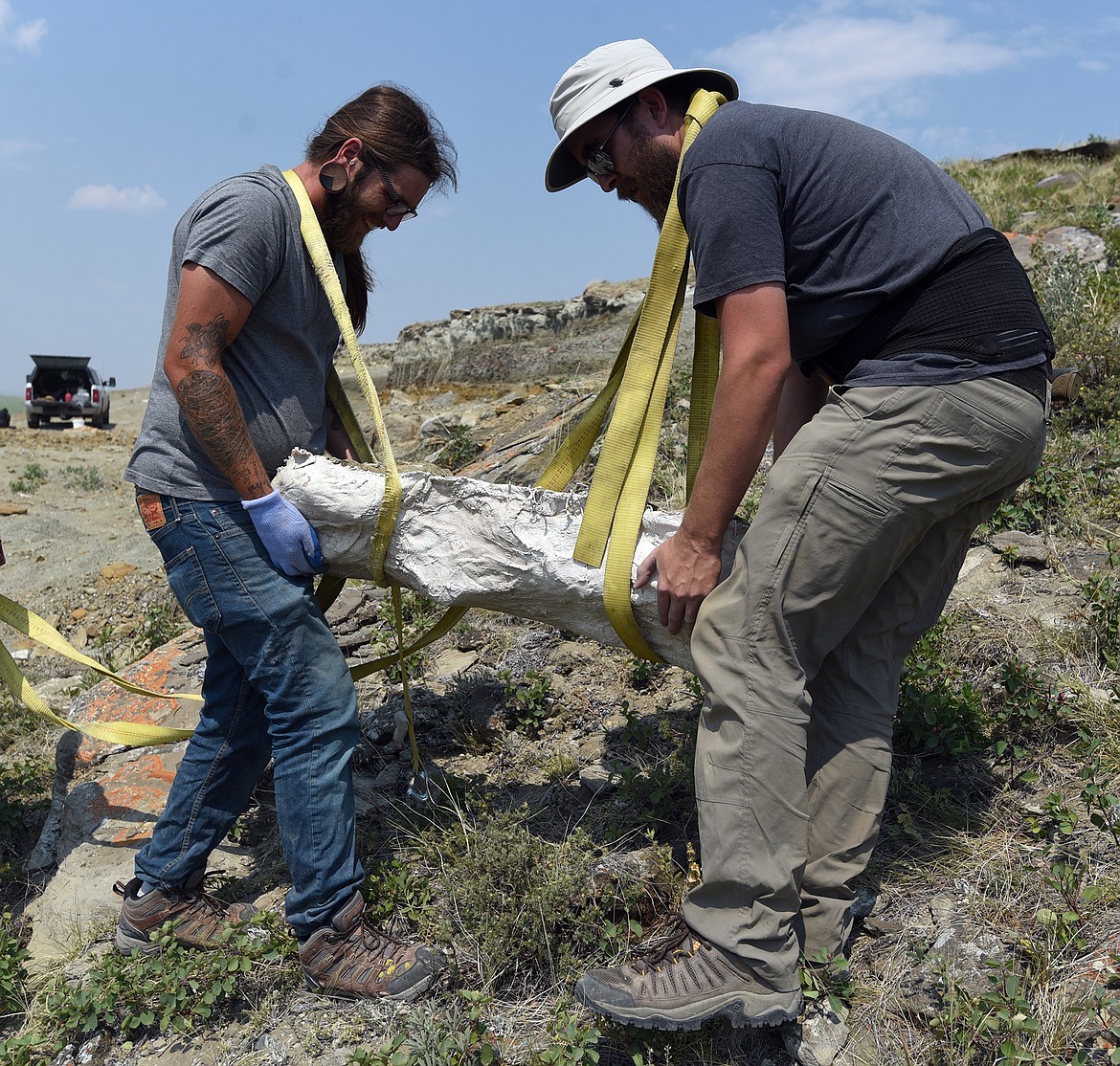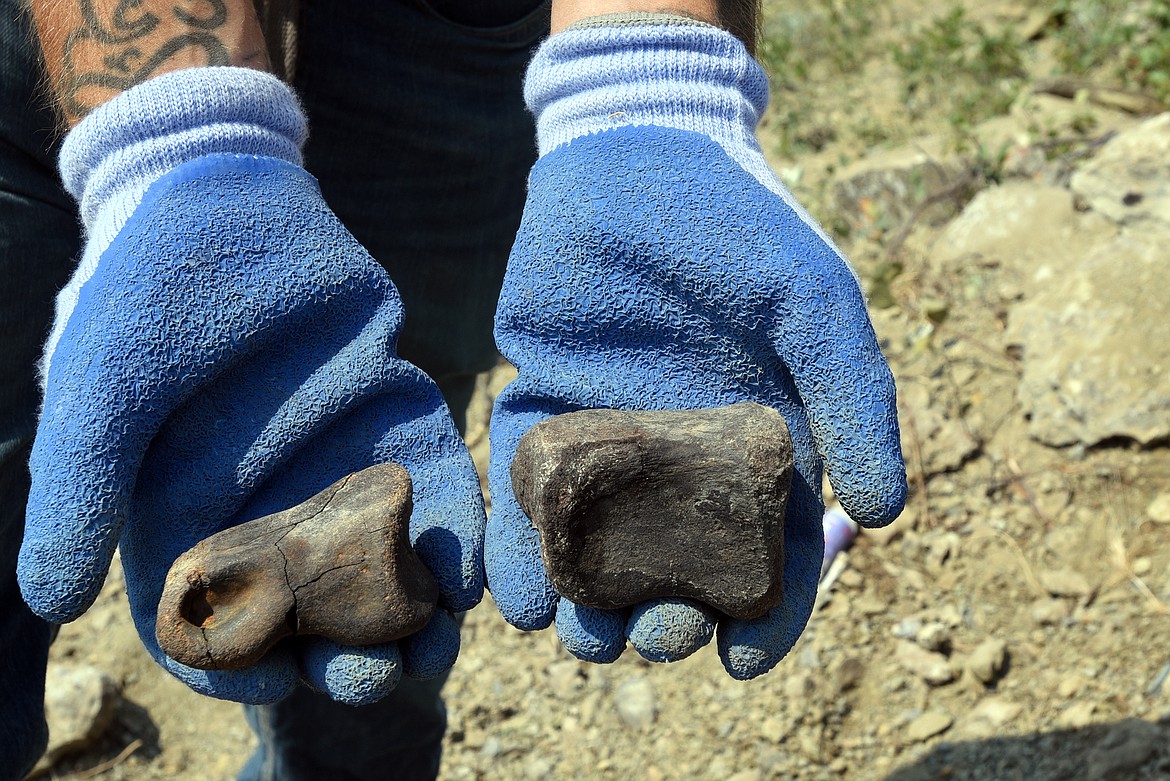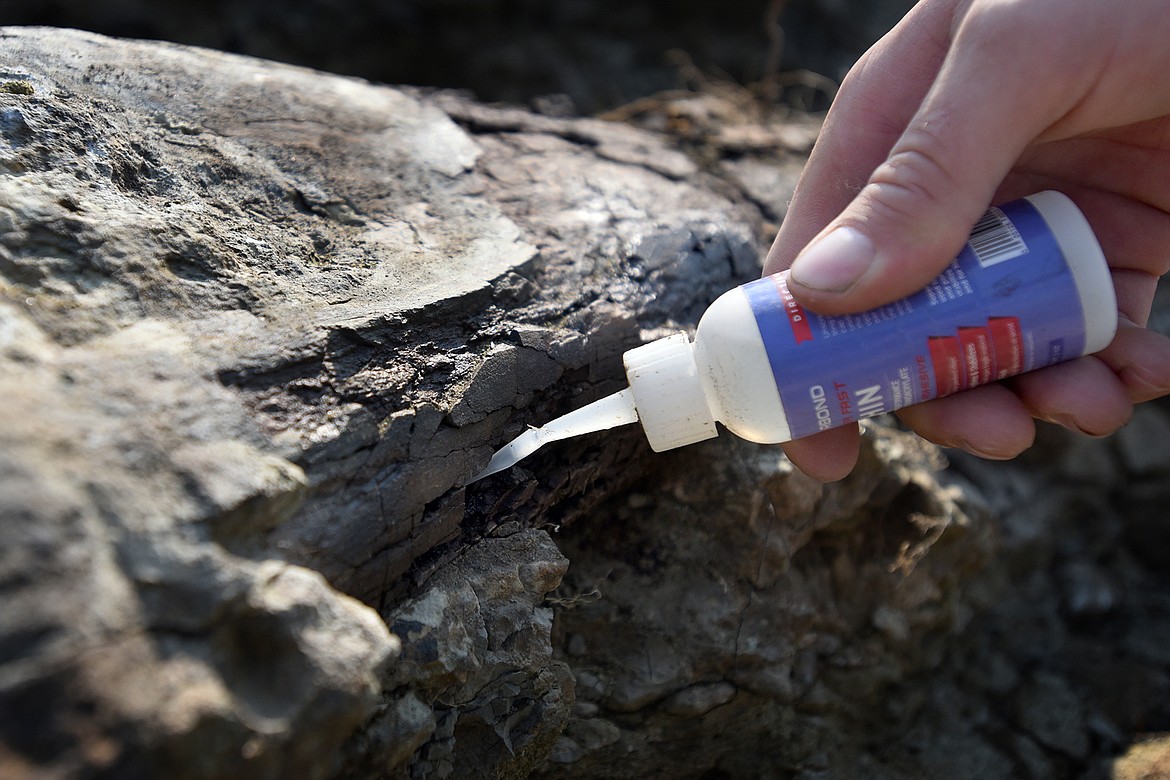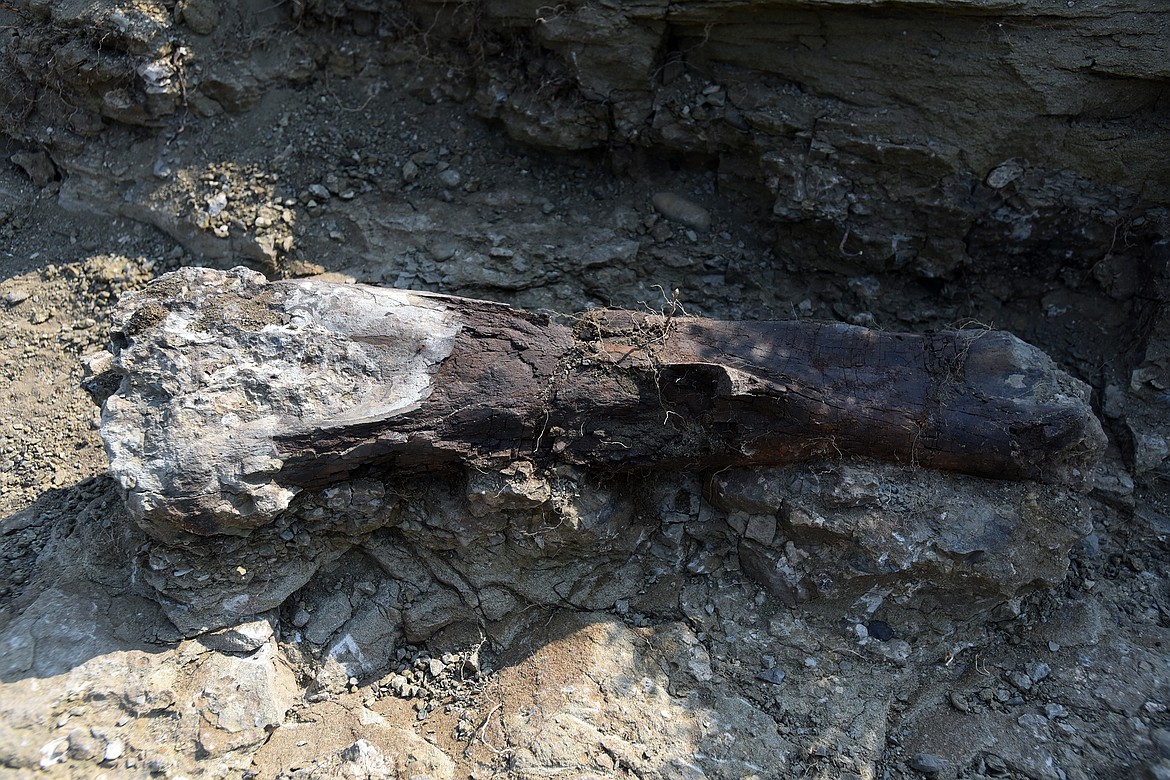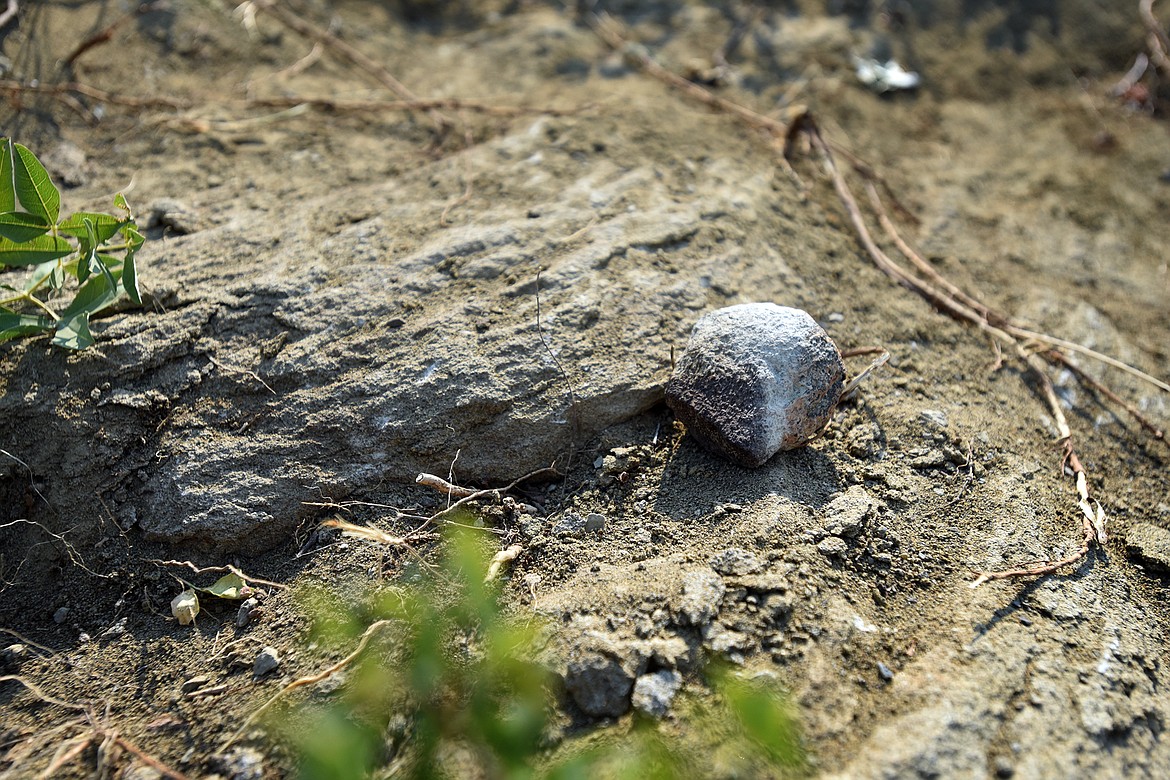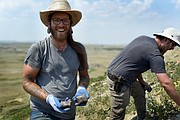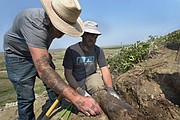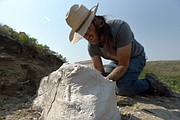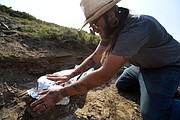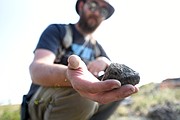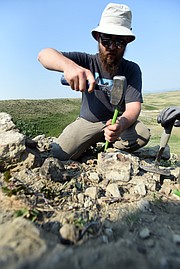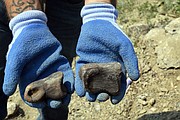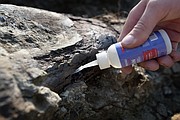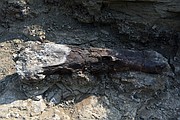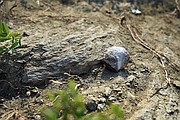Impressive finds continue for Whitefish-based fossil hunters
A smoky haze obscured the mountains while the morning sun already was baking the landscape as Aamon Jaeger began unloading tools from his truck. Armed with his trusty pry bar, chisel and hammer, brushes, a bottle of glue, burlap strips, plaster and an industrial-size roll of aluminum foil, he settled into a partially excavated rock quarry that has become his home away from home for the past seven summers.
It was time to dig.
The isolated, rocky hillside east of the Continental Divide may not look like much now, but it was once home to some of the most impressive animals ever to walk the Earth.
Letting his imagination intersect with reality, Jaeger surveyed the waves and ripples of the sandstone layers and saw the large inland sea, sandy beaches and wet marshlands that dominated the Montana landscape 74 million years ago. Far different from the world today, the Montana of the Late Cretaceous Period was a coastal plain bordering a shallow ocean known as the Western Interior Seaway. The coast (which was located near Havre) was lined with rivers, dotted with a few lakes and was home to dozens of species of dinosaurs.
It is those kings of the Cretaceous and giants of the Jurassic that have captured Jaeger's imagination since early childhood and still entice him to brave the extremes of Montana's unpredictable weather to spend countless hours digging in the rock, dirt and sand of Two Medicine Formation.
"Since I was a baby, I have been obsessed with fossils. I just love them, and I am not really quite sure why. This all started as a weekend thing and it has just grown into a full-time thing from there," Jaeger said.
"Those artists' depictions you see, with tropical waterways with volcanoes erupting in the background — that's what this area was 74 million years ago," he said. "The Rocky Mountains were just beginning to form, but there were some volcanoes in the area. We are standing in a layer from the Cretacious, but just a few miles to the west you can find Triassic layers from 345 million years ago. The geology in this area is astounding and is overlooked a lot of the time. You can look at a hillside here and see the history of this area for the past 350 million years."
The layers of sandstone and limestone deposits read like a book for Jaeger, with the smooth, orderly layers of sandstone telling a story of the calm, peaceful periods of relatively stable geologic activity in the area. It's a rocky novel some 20 feet deep, but it's the more chaotic, rubble-strewn deposits buried deeper in the hillside that keep him coming back to the area year after year.
The area of most interest looks more like concrete than anything else, a layer full of water-polished rocks of various sizes encased in a hard layer of stone. It resembles a hardened riverbed, because that's essentially what it is.
"There was a massive flood that moved through this area 74 million years ago. It was an event that would have wiped out entire herds of dinosaurs," Jaeger said. "Their bad luck was our gain, though. Contrary to what you might believe, fossils are not rare; you just have to know what to look for and how to find them. Montana is a Mecca for fossils. There are tons of fossils from all different ages across the state. There are more fossils than there are people out there looking for them."
The area that was a death zone for dinosaurs still presents its own set of dangers today. Every so often, Jaeger pops his head up from the rock to survey the grassland below the dig site, constantly on the lookout for the grizzly bears that frequent the area.
"We see them here fairly regularly, but they have never messed with us, yet," he said. "This area is kind of like their superhighway. We just try to stay out of the way as they are moving through."
HAVING SOLD his Tree of Life Tattoo shop in Whitefish, Jaeger and his wife Chantel have turned what was once a weekend hobby into a full-time hunt for fossils with their NorthWest Montana Fossils, which shares a retail space with the Treasure Outpost at 16 Baker Avenue in Whitefish. With help from their friend Zane Rhyneer, the group is slowly uncovering the hillside's secrets.
It was while working at another site some 17 miles closer to the mountains (in the same flood layer) that Jaeger first saw the Two Medicine Formation hillside while surveying the area on Google Maps. After identifying and contacting the land owner, he could not wait to get his first in-person look.
"I spent the first year basically just walking the area and surface hunting to see what I could find. I came to the top of this hill and found massive amounts of bone fragments spilling out and I knew this is where I wanted to dig," he said. "At first we were just finding isolated bones and fragments. As we started peeling the layers back, we found more and more complete bones. That's when it is time to bring in the machinery and really start looking to see what is there."
As they peeled back the layers and millennia, more complete bones began to emerge.
"The bone out here is very dense. It has been replaced with a lot of calcite crystals and dolomite and manganese. This area has arguably some of the best bone preservation in the world just because of how dense they are," Jaeger said. "Also, when it is encased in such hard rock, that really helps to keep it preserved. It makes it much harder to get out, though."
While the massive flood event that deposited the bones meant that full skeletons are nearly impossible to find, it also helped create a layer littered with the bones of a variety of species. To date, the group has identified more than a dozen species at the site, with new ones popping up fairly regularly.
ON A recent day, the massive four-foot femur of a hadrosaur sat exposed where Aamon Jaeger and Rhyneer had painstakingly removed it from the surrounding rock. Tediously, they covered the fragile, crumbling parts of the fossil with glue to stabilize it while preparing a protective jacket of burlap, plaster and foil to protect the specimen for transport.
It was nerve-wracking work as they slowly removed the more than 100-pound fossilized bone and carefully moved it more than 100 feet to Jaeger's waiting truck. One slip could destroy something that has sat preserved in the rock for more than 70 million years, but it is only the first part of the long preservation process.
"Once the bones make it to the surface, they have less than a year until they are destroyed. That's why it is so important to get these specimens out of the hillside here and get them home where they can be preserved," Jaeger said. "Just getting them out of the ground is the very beginning of the work. Getting the bone ready for presentation is an incredibly meticulous process all to itself. There are hours of work ahead after we get a bone out of the ground."
Later, Chantel Jaeger and Rhyneer will begin the preservation process that involves removing the rest of the rock, filling any cracks and holes with putty and clay and the production of a mount, if needed, before the fossils are ready to be sold.
AS COMMERCIAL dino hunters, Aamon and Chantel Jaeger are among a roughly 100 individuals that scour the private lands of the American West for specimens. (Removing vertebrate fossils from public land is illegal.)
Like treasure hunters, the members of the group try to earn a living.
"There really is no blue book of dinosaur bone values. We have to base our prices on the time and resources it takes to get the bone out of the ground, the time in the prep lab and the cost of the mount. The final price is a reflection of the time and materials used," Aamon Jaeger said. "It's hard to find people who will stick with it long term. It's a bit of a plight with dinosaurs because nothing is guaranteed. There is no 401(k). There's no retirement fund. It's kind of like operating a gold mine. It's treasure hunting. You might have some years where you are eating ramen, and other years you are eating steak."
While the ultimate goal is to make money, Jaeger said the science of hunting for dinosaur bones and finding new species is part of the thrill.
"Many of my colleagues and I are really hoping to help close that gap between commercial diggers and the academics. We dig for a different reason, but we can really help advance science with our finds," he said. "I want this quarry to be my life's work and I want to discover as many different species here as we can. I want to help people with their collections, but I am out here for the science as well."
Reporter Jeremy Weber may be reached at 406-758-4446 or jweber@dailyinterlake.com.


